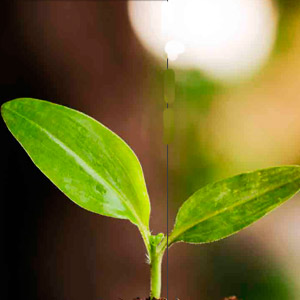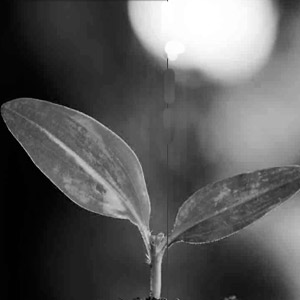
Dra. María Francisca Blanco: Hacia una agricultura de vanguardia
La calidad de nuestros suelos y las características climáticas permiten que nuestra agricultura sea reconocida internacionalmente. De hecho, según cifras de Odepa, el país cuenta con más de 300 mil hectáreas plantadas con especies frutales y es líder regional en la producción y exportación de productos como la uva de mesa, arándanos, nectarines y manzanas.
 Si bien el sector hortofrutícola representa uno de los aportes más importantes de ingresos para el país, es necesario generar tecnologías y estrategias que permitan optimizar las cosechas, evitar mermas en las producciones y lograr costos compe- titivos en referencia a las potencias agrícolas y a aquellos países que comienzan a ingresar al mercado.
Si bien el sector hortofrutícola representa uno de los aportes más importantes de ingresos para el país, es necesario generar tecnologías y estrategias que permitan optimizar las cosechas, evitar mermas en las producciones y lograr costos compe- titivos en referencia a las potencias agrícolas y a aquellos países que comienzan a ingresar al mercado.
En este contexto, la Dra. María Francisca Blanco, investigadora del Centro de Biotecnología Vegetal de la Universidad Andrés Bello lidera una investigación que plantea la identificación de los aspectos moleculares que participan en la interac- ción planta-patógeno.
De esta forma, la investigadora UNAB explica que “el propósito central de este trabajo es determinar los mecanismos de defensa que las plantas desarrollan para hacer frente al estrés causado por organismos como bacterias, hongos e insectos”.
Según expone la Dra. María Francisca Blanco, el estudio que lleva a cabo y que recibe financiamiento a través de Fondecyt, permitirá utilizar sistemas modelos de interacción planta-patógeno para abordar de mejor manera la realidad de culti- vos nacionales y así lograr estrategias agronómicas óptimas para la eliminación de enfermedades e infecciones. Para ello, este estudio contempla la identificación y análisis de las rutas de señalización que la planta enciende para defenderse cuan- do reconoce un estímulo externo negativo.
“Durante los últimos tres años, hemos podido definir algunos mecanismos por los cuales la planta regula la respuesta de defensa vegetal. Es decir, nuestros avances nos han llevado a determinar puntos de control por medio de los cuales la planta elige la forma en la que actuará frente a factores medioambientales causantes de estrés”, agrega la investigadora del Centro de Biotecnología Vegetal UNAB.
Finalmente, la Dra. Blanco explica que los hallazgos a nivel molecular de especies vegetales, permiten dilucidar cómo la planta, a partir de proteínas reguladoras centrales, es capaz de direccionar una respuesta final y definir las proteínas efec- toras que utilizará, orquestando así una respuesta de defensa, tanto para estrés biótico como abiótico.
Descargar PDF: Hacia una agricultura de vanguardia
Advancement towards cutting-edge agriculture
In a global context, one of the distinguishing characteristics of Chile is its agriculture. In fact, according to ODEPA (Office of Agricultural Studies and Policies of the Ministry of Agriculture), Chile has more than 300 thousand hectares planted with fruit species and is the regional leader in the production and exportation of products such as the table grape, blueberries, nectarines, and apples.
 While fruit and vegetable production represent one of the most important sources of income for the country, there is a need to develop technologies and strategies for optimizing harvests, preventing reductions in production, and for achieving competitive pricing against agricultural leaders and upcoming countries new to the market.
While fruit and vegetable production represent one of the most important sources of income for the country, there is a need to develop technologies and strategies for optimizing harvests, preventing reductions in production, and for achieving competitive pricing against agricultural leaders and upcoming countries new to the market.
It is in this context that Dr. María Francisca Blanco, investigator for the Center of Plant Biotechnology of the Faculty of Biological Sciences at the Universidad Andrés Bello, is leading an investigation to identify the molecular aspects that participate in pathogen-plant interactions.
Dr. Blanco explains that, “the central purpose of this work is to determine the defense mechanisms that plants develop when faced with the stress caused by organisms such as bacteria, fungi, and insects.”
According to Dr. María Francisca Blanco, this research, financed through Fondecyt, will facilitate the use of plant-pathogen interaction models. Specifically, these models will provide better information on the realities of national agriculture, which, in turn, can be applied to achieve optimal agricultural strategies for the elimination of diseases and infections. For this, the project contemplates the identification and analysis of defense-related signaling pathways triggered in plants when a negative, external stimulus is recognized.
“Over the last three years, we have been able to identify some mechanisms through which plants regulate the defense response. In other words, our advances have led us to determine the control points through which a plant decides how to respond to stressful environmental factors,” adds Dr. Blanco.
Finally, Dr. Blanco explains that through molecular findings, particularly in regards to central regulator proteins, it is possible to determine if a plant will be able to establish a final defense response, in addition to defining the effector proteins that will be used to orchestrate a response to biotic and abiotic stressors.
Download PDF: Advancement towards cutting-edge agriculture
